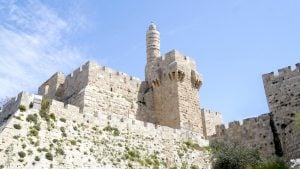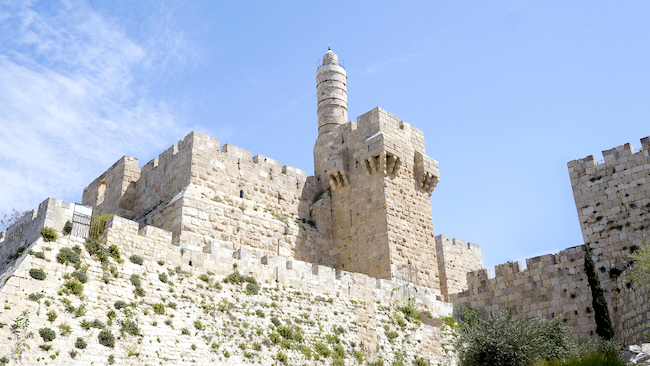
Kings II, 12
This week’s haftorah, read in conjunction with Parshas Sh’kalim, deals with the collection of funds for the Bais Hamikdash. In the days prior to King Yehoash, the Bais Hamikdash was seriously neglected and much repair work was required to restore it to its original splendor. After the kohanim’s unsuccessful attempt to collect the necessary funds, the righteous King Yehoash spearheaded the collection and an overwhelming response occurred.
The reason for this neglect is explained in Divrei Hayomim (2:23) wherein it blames the wicked Queen Atalya and her wicked sons for the deteriorated condition of the Bais Hamikdash. The royal family had seriously mistreated the holiest structure on Earth and roamed freely inside it, causing much damage to its walls and interior structure. Actually, money was constantly donated to repair the Bais Hamikdash but these funds were repeatedly misappropriated by Atalya. Instead of being used for the Bais Hamikdash they were channeled to further practices of idolatry. Now that the pious Yehoash came to power idolatry was removed from the royal family and the funds were finally applied to their intended usage. After so many years of neglect the Bais Hamikdash was finally restored to its previous glory.
The haftorah of Parshas Sh’kalim echoes the earlier experiences of the Jewish people read in the Torah portion this week. During their exodus from Egypt Hashem rewarded the Jewish people with an abundance of wealth from the Egyptian nation. Instead of applying this towards the service of Hashem the Jewish people donated their precious gold ornaments to produce the Golden Calf. After Hashem’s severe response the Jews recognized their error and returned wholeheartedly to Hashem. They were given the opportunity to rectify their grave sin and were invited to participate in the building of a Mishkan. This time they utilized their money for proper purposes and generously donated their funds towards the construction of a magnificent sanctuary. Hashem accepted their teshuvah and consented to rest His divine presence amongst the Jewish people in this glorious edifice.
The reading of Parshas Sh’kalim and its accompanying haftorah serves as a most appropriate introduction to the month of Adar. As we read in Megillas Esther (3:9), the wicked Haman attempted to purchase the Jews from the king with an impressive ten thousand silver blocks. He intended to use his power of wealth to influence the king to grant permission to destroy the entire Jewish nation. However, as the Gemara in Megilla (13b) teaches us, Haman’s efforts were preempted by the donations of the Jewish people to the Bais Hamikdash. Interestingly, this exact sum of ten thousand silver blocks was annually donated by the Jewish people for the sake of the sacrifices in the Bais Hamikdash. Hashem said, “Let the Jewish nation’s ten thousand abort Haman’s influential process of his ten thousand.” The Jewish people’s annual donation demonstrated that they were not influenced by the power of money. They properly allocated their funds to the most worthy of causes and annually gave ten thousand blocks of silver for the sake of Hashem and His Bais Hamikdash. Therefore, Haman’s financial influence, his ten thousand silver blocks had no influence over the Jewish people. They could not be improperly influenced by money and money could therefore never serve to produce an improper influence over them. Eventually, the king would and did see through Haman’s plot and his money and influence were to no avail.
It is with this lesson in mind that we read Parshas Sh’kalim and usher in the month of Adar. Parshas Sh’kalim reminds us of the great significance of money when allocated in the proper ways. Through properly directed donations, the beautiful edifice of the Bais Hamikdash was restored to its glory. Through such donations the Jewish people received atonement for the gravest of their sins. And through these charitable donations we merited the miracle of Purim and learned that even our most powerful of enemies replete with significant funds had no influence over us.
This timely insight sheds a colorful light on the unique mitzvos of Purim. Unlike any other holiday, Purim focuses on the Jewish nation’s generosity to give and share its financial resources. The holiday of Purim asks of us to part with our money for numerous causes, such as Machtzis Hashekel, Matanos L’evyonim and Mishloach Manos. Through these, we demonstrate our readiness to allocate our funds to the proper causes. We display this supreme quality of generosity as the hallmark of the Jewish people and remind ourselves that in this merit we were privileged to experience the miracle of Purim. Therefore every Purim we demonstrate this Jewish quality of generosity and put our money to the proper usage. We guarantee through this that no foreign power will ever affect us through its financial influence and we remind ourselves that in this merit of generosity we will eventually witness the rebuilding of the Bais Hamikdash and the return of the divine presence to Israel.


